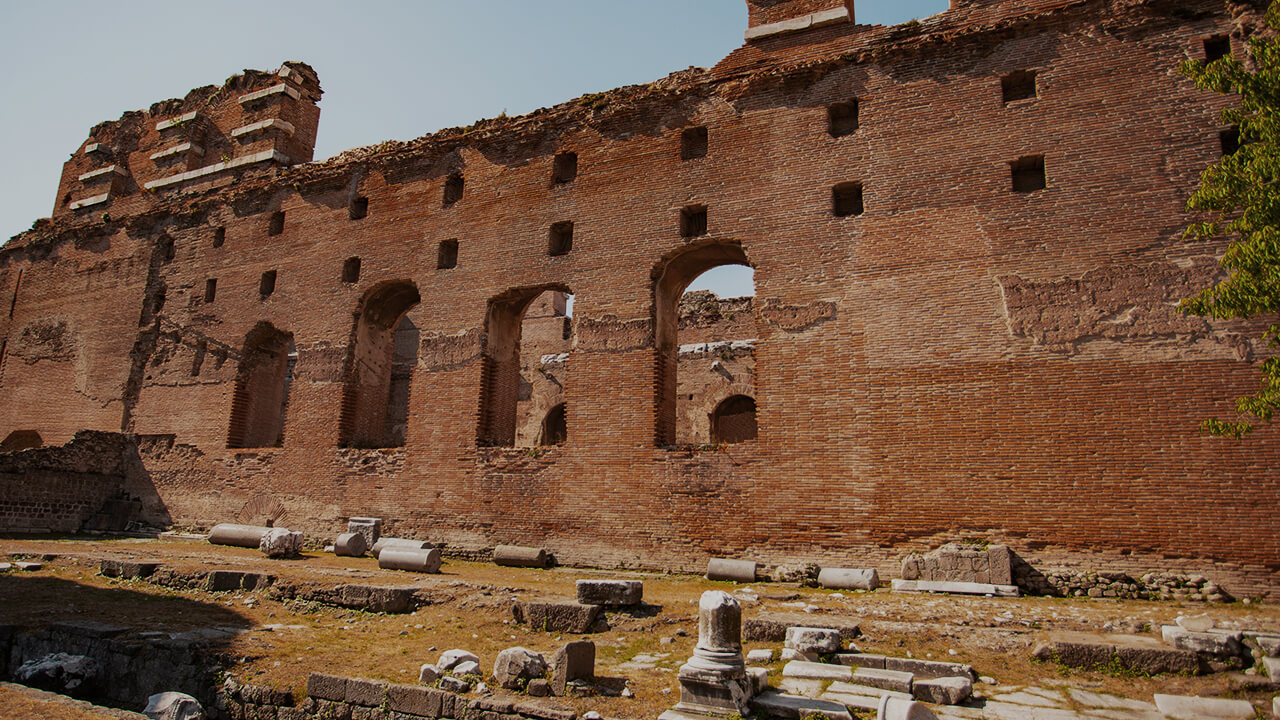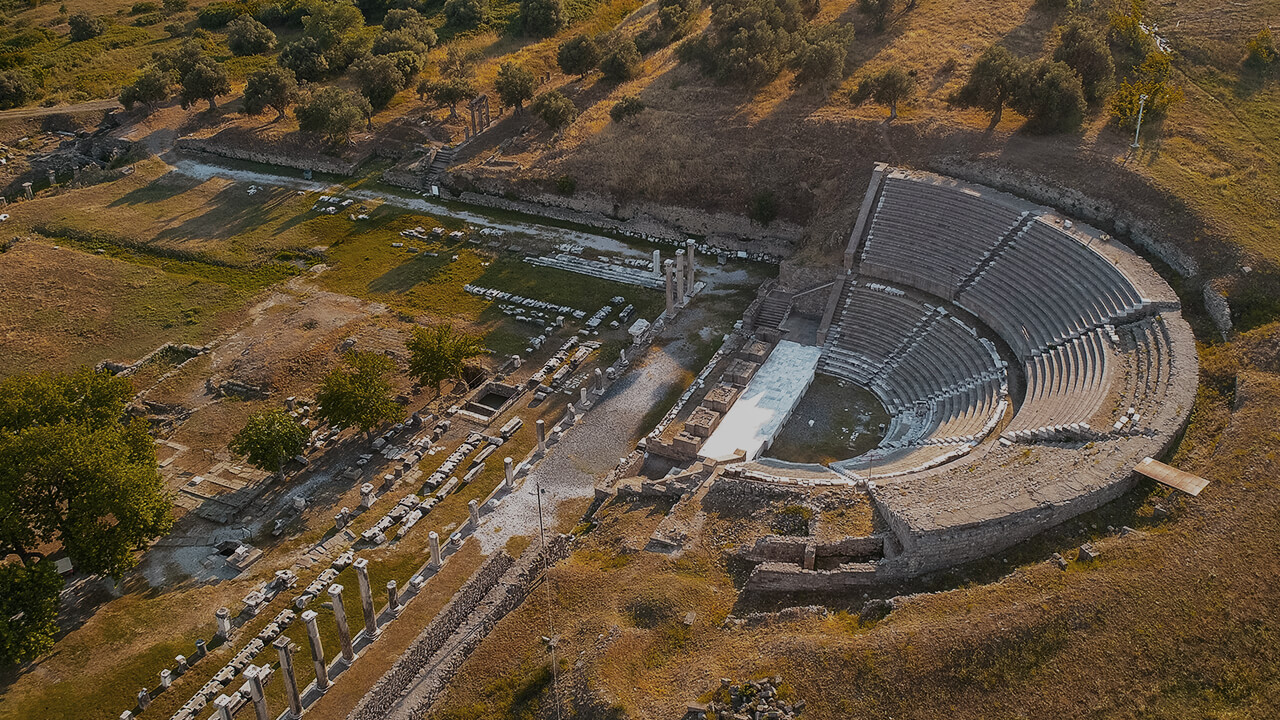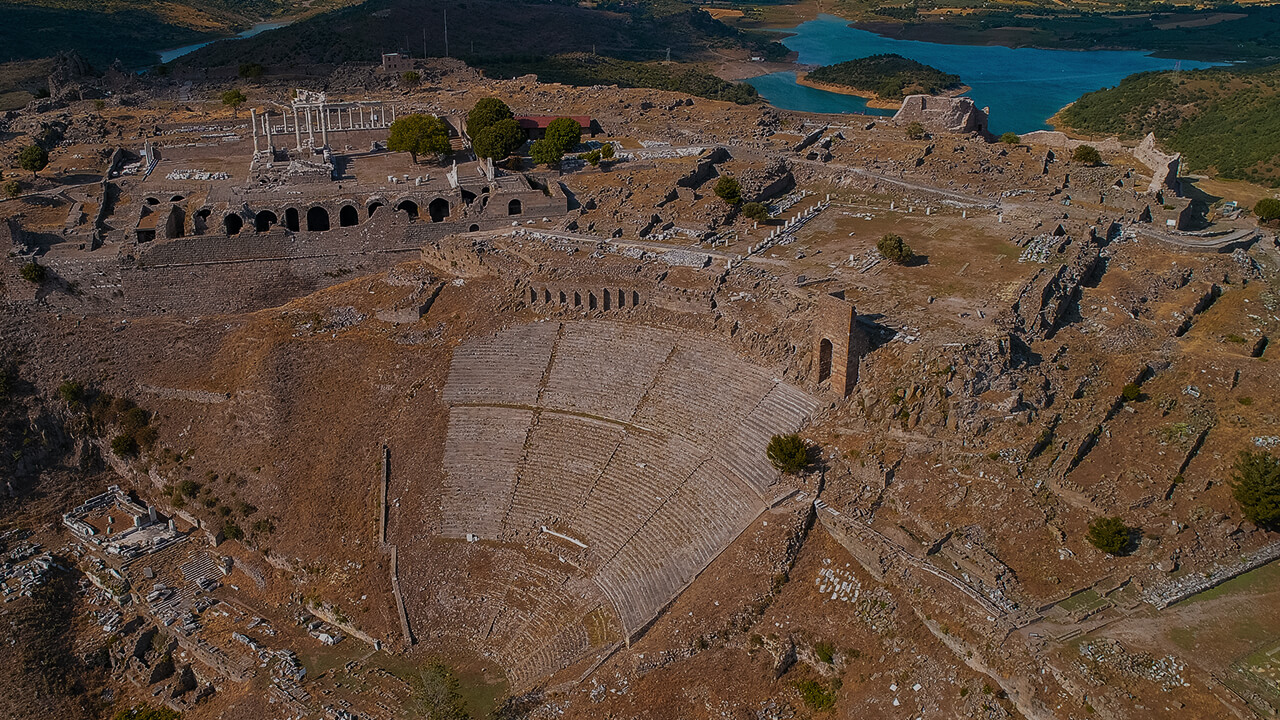
7.04.2024
5 Dakika
In the Aegean region, on the slopes of a hill overlooking the area watered by the Bakırçay River, lie the ruins of a city known in ancient times as Kaikos. This city is Pergamon, the heart of the ancient world. Its layers contain important traces that reflect the remarkable cultural synthesis of the region and the historical continuity of relations between these cultures. In the Bakırçay basin, religion, science, and art were interwoven. Pergamon became the capital of the Asian province of the Roman Empire after being the capital of the Kingdom of Pergamon, which emerged from the legacy of Alexander the Great.
The ancient city of Pergamon was inscribed on the UNESCO World Heritage List in 2014 for its outstanding universal value. This is not an easy city to appreciate if you haven't seen it in person. More than 2,000 years after its foundation, this city is a magnificent example of how people integrated their living spaces into the natural topography. Located on the 336-meter-high Kale Hill, the buildings in the city's acropolis were built with a special plan in accordance with the steep slopes of the hill. This resulted in the unique view of the acropolis overlooking the plain and the city's unusually steep ancient theater. The acropolis of Pergamon, which was a patron of the Hellenistic cities in the region, demonstrates its status with its actual location.
If you want to get a sense of what you can experience in this very special piece of humanity's shared heritage, you can watch our video "Uncovering: Pergamon" on our Turkish Museums Instagram page.

When you visit Pergamon, there are two places you must see before going to the Acropolis. One is the Red Basilica, which was built in the 2nd century AD and is thought to have been dedicated to Egyptian gods in its early days. The Red Basilica is a very magnificent and gigantic structure, and it gets its name from the red bricks from which it was built. The temple was converted into a basilica in the 5th century.
The other place you can see before going up to the Acropolis is the Asklepion. This is a sanctuary dedicated to Asklepios, the god of health, and it was also a very important healing center in antiquity. The area includes a temple dedicated to Zeus and Asklepios, as well as a library, a 3,500-seat theater, feasting and banquet courtyards, and toilets. The round building in the southeast corner of the site is the treatment building. This center, where we can access information about the treatment methods used here from ancient sources, was also home to one of the most important figures in the history of medicine, Galen. For more information about this important structure in the history of medicine and the healing tradition in Pergamon, you can read our article titled “History of Medicine: Ancient City of Pergamon”.
After seeing these extensions of Pergamon on the plain, you have a few different options for reaching the city's magnificent Acropolis on Kale Hill. You can reach the Acropolis by car or on foot, or you can take the cable car in the area.

When you reach the Acropolis, the breathtaking view that stretches to the horizon gives you a sense of the greatness that the kings of Pergamon had. The Temple of Trajan, with some of its majestic columns still standing, immediately catches your attention at the highest point of the Acropolis as the remains of an architectural marvel. The temple is 27 meters tall from the bedrock, and it could be seen even from far away in its glory days.
The theater, which is the world's steepest ancient theater, is another breathtaking venue on the Acropolis. In this part of the city, you can also see the ruins of Pergamon's famous library, which housed 200,000 scrolls. When you proceed to the Upper Agora section of the Acropolis, you can see the ruins of the Sanctuary of Demeter and the Gymnasium, one of the largest educational centers of the Hellenistic period, which was built on three terraces.

The Pergamon Multilayered Cultural Landscape, which is on the UNESCO World Heritage List, contains so many values that it is not possible to cover them all in one article. We believe that the wisest option is to visit this impressive ancient city, which has a distinct place among the cities of the world in terms of architecture, engineering, and culture.